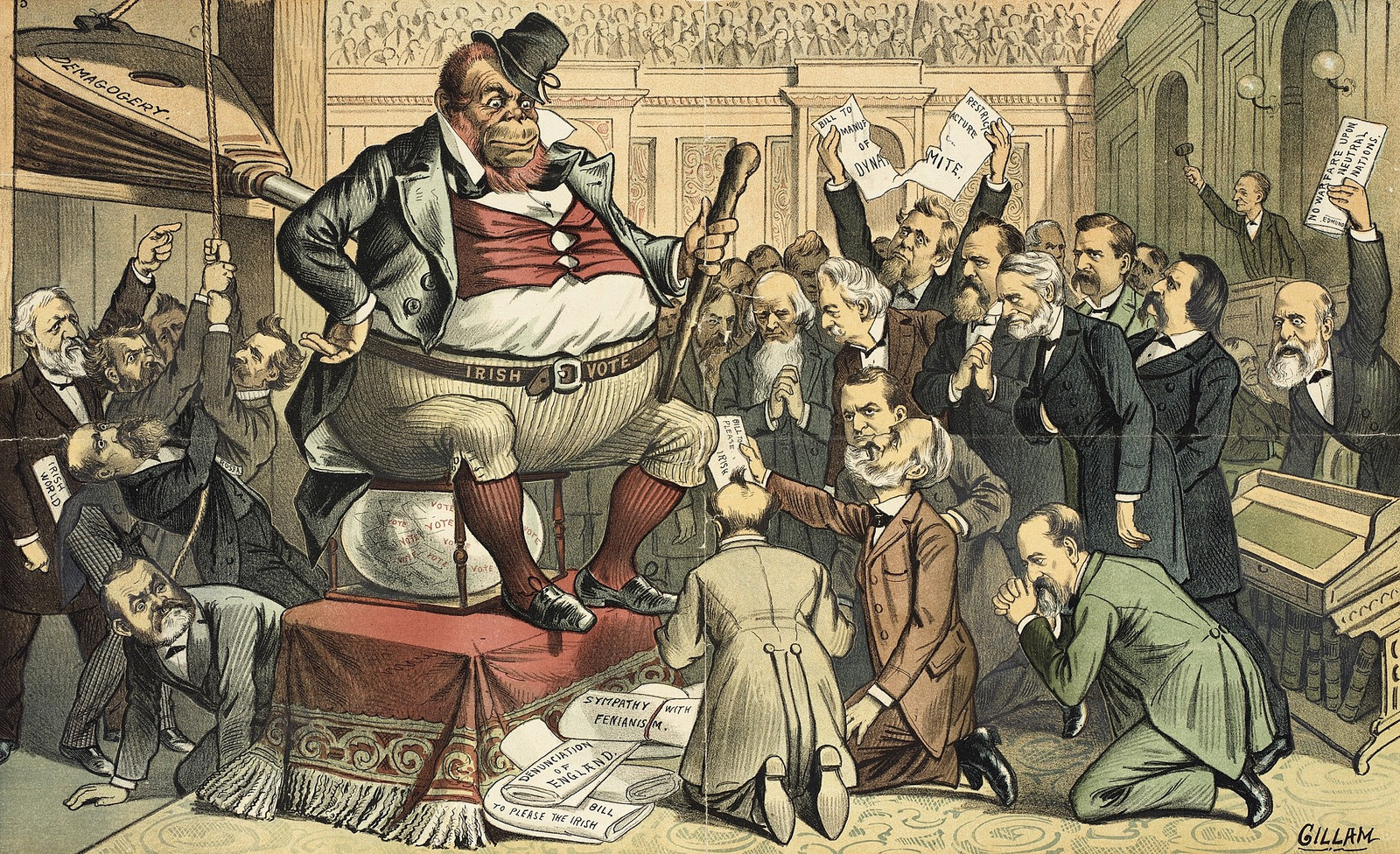Anti-Immigrant Cartoons Span Three Centuries, but Stoke the Same Fears
By:
While the general attitude about immigration has changed greatly in the last century, it’s clear that true change is being held back by fear-mongering and suspicion of “the other.” Nowhere is this more evident than in satirical cartoons regarding refugees.
British author Nick Srniceck used Twitter to point out the similarities between one anti-refugee cartoon from 1881 (which he mislabels as being from the 1930s) and another from 2016. Other than their drawing style, they’re almost identical in subject matter, tone, and in what they represent.
The 1881 cartoon was drawn for nativist and anti-immigrant Puck Magazine, and shows a shipload of Jewish refugees labeled “the persecuted.”
The 2016 cartoon depicts an overcrowded ship of migrants crossing Liverpool’s River Mersey, and is from The Times, the British center-right newspaper owned by Rupert Murdoch.
Keeping with the style of their time, the Puck cartoon is nakedly racist and disdainful of its subjects, even questioning the validity of their persecution. The Times cartoon is more a pointed jab at a politician, using the plight of migrants as a vehicle for a personal insult. In this case, the target is British Labour Party leader Jeremy Corbyn, who recently pledged not to cut Britain’s intake of refugees from the Middle East, particularly Syria.
However, both cartoons play on an underlying fear of their country being overwhelmed by dangerous, dirty, and non-assimilating migrants. The media played a huge role in stoking these fears in both times. In particular, Puck and other magazines routinely published cartoons that depicted a valiant America breaking under the strain of endless hordes Irish, Italian, Chinese, and Jewish immigrants it deemed to be illiterate, lacking in usable skills, and carrying disease.
For example, this Puck Magazine comic from 1885 depicts the "Irish Vote" a giant ape, before whom members of congress supplicate themselves.
 Wikimedia Commons image page - flickr.com
Wikimedia Commons image page - flickr.com
Similar rhetoric and legal restriction is heaped upon the migrants of today, particularly the baseless fear that refugees fleeing the Syrian Civil War will swamp the countries they enter with terrorism, lack of skills, and disease. The Times cartoon reflects this fear perfectly, essentially depicting migrants as a horde coming to wreck the English way of life – and abetted by English politicians.
These cartoons had an undeniable effect on the people who read them, in both time periods. Stoked by nativist media outlets, anti-immigrant and anti-Catholic parties and labor unions, a series of exclusion laws were passed in the late 19th and early 20th century to restrict or completely end immigration from Asia and Europe.
Such fears are equally powerful and influential today. It’s believed that British apprehension about unchecked Syrian immigration played a role in the success of the “Leave” faction of the Brexit vote. At the same time Donald Trump’s promises to build a giant wall on the Mexican border while shutting down immigration from primarily Muslim countries have garnered him tens of millions of votes.
But while the racist and nativist cartoons of the late 19th century are mostly looked at as harmless historical artifacts, people are pushing back against those of the 21st century. The Times was slammed by complaints about its cartoon, with Twitter users calling it appalling, vile, appalling, and racist.
The nativist hysteria that ran from the 1880s through the 1920s eventually died down, and the nakedly racist cartoons that helped stoke it eventually fell out of favor. But anti-immigrant fears themselves are clearly still around – and still exerting influence.
